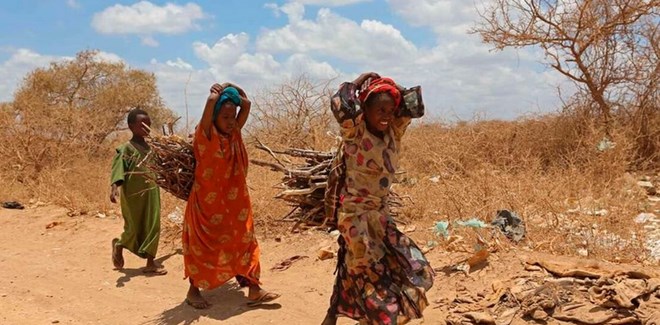
Tuesday October 12, 2021
Somalia is facing another round of devastating drought, adding to the country’s security woes and indicating just how dangerous irregular climate is becoming to the Horn of Africa.
On Thursday, a spokesman of Somalia’s Jubbaland state almost wept in public while updating the country on the situation in southern Somalia.
Jubbaland, one of the three federal states in south of Somalia (which has five overall) had held an emergency meeting of the council of ministers that considered a bleak conclusion from the region’s ministry of agriculture on the fate of the rural people.
The regional government stressed that the scarcity of food, feed and water is despondently felt across the three regions of the state, namely Gedo, Middle Jubba and Lower Jubba.
Fear of clashes
To make matters worse, the report by the ministry indicated that pastoralists moving across the borders between Kenya and Somalia have had to jostle for the little water that is available, raising prospect for intercommunal clashes.
“Nomads from all parts are just looking for any place where they can find survival for themselves and for their animals,” the report said, mentioning extreme shortage.
The ministry had drawn a picture of pastoralists just overcrowding in parts of the Lower Jubba region to find whatever pasture is left in vegetated lands in Ras Kamboni, Kulbiow, Kuda’, Afmadow and Dobley locations and districts.
The vegetation is so dry and fragile and water so scarce, according to the ministerial report, that the herders are witnessing their animals dying right “before their eyes”.
“We are getting reports that families that had 300 livestock a short while ago are left with only three or four animals,” the statement said, depicting extreme death rate of the animals with carcasses and dry bones visible everywhere.
No drinking water
Jubbaland is reporting that food and feed shortage is coupled with almost nowhere to find drinking water for both humans and animals.
“Both humans and animals are surviving on the little liquids found on drying up ponds and wells,” the government said, adding that dirty waters is increasingly becoming a source of diseases and illness.
Animals are said to be dying not only for lack of pasture, but also due to water borne diseases.
“Both known and unknown type of illnesses are killing the animals in hordes,” the council of Jubbaland ministers reported, pleading for urgent intervention.
“We urge the local and international non-governmental organisations (NGOs), the Federal Government of Somalia, the country’s international partners to act on this calamitous situation,” the statement said.
Call for help
All those who could help were openly invited to join a campaign promised by the Jubbaland government to deliver water where it can.
The state has assembled a committee to coordinate responses.
“What are urgently needed are water, food and feed,” the government implored, asking any capable person or agency to help.
On Saturday, Shire Abdi Mohamed, a member of Jubbaland State Legislative Assembly, told the media that the drought situation in Gedo region is getting bad, particularly if the current trend continues.
“Diseases are rampant because both animals and humans are fetching water at overcrowded ponds using whatever water is left, no matter how dirty and unhygienic,” Mohamed stated.
“If available at all, a drum of water is sold about US$8 and may soon reach US$10,” he added.
Similar scenario is reported from other places in Southern Somalia.
Dry wells
In Bakol region in the South West State, a water seller, Nur Abdullahi Mohamed, in Hudur town told Radio Ergo, a popular broadcaster on humanitarian and development matters in Somalia, that he could not find water at any of the wells in the town.
“The queues are too long. The situation is so dire, only those who have experienced it can talk about,” Ergo quoted residents saying. “We pray to God for rain.”
Hudur, like many other towns in Southern Somalia, has been under siege by the jihadist group Al-Shabaab for several years, worsening the situation.